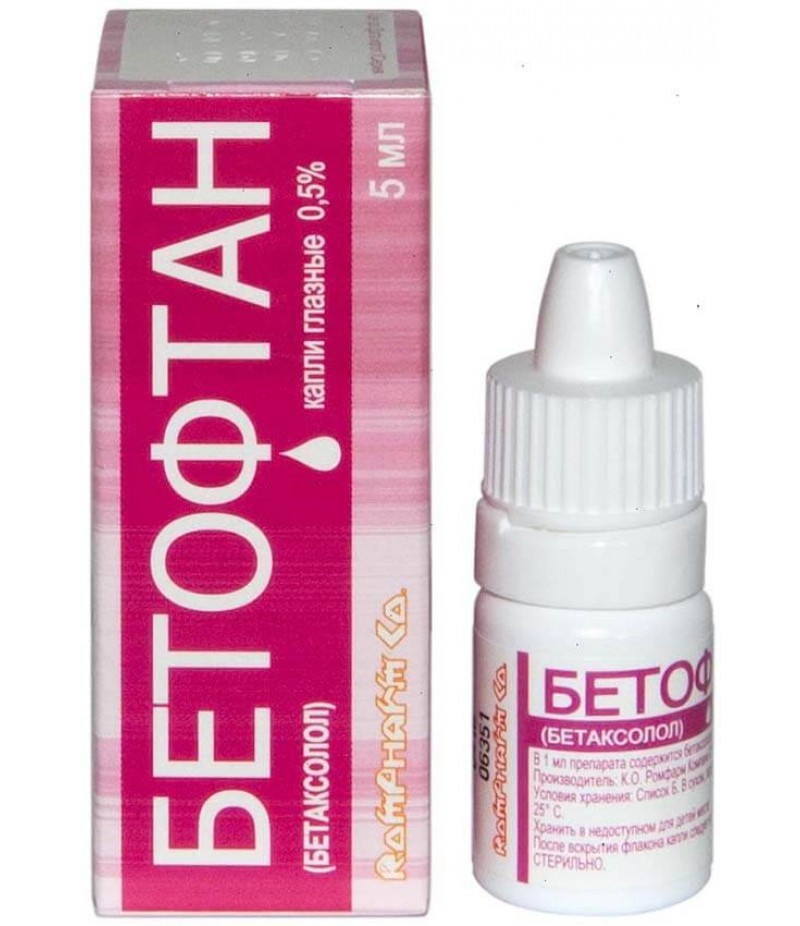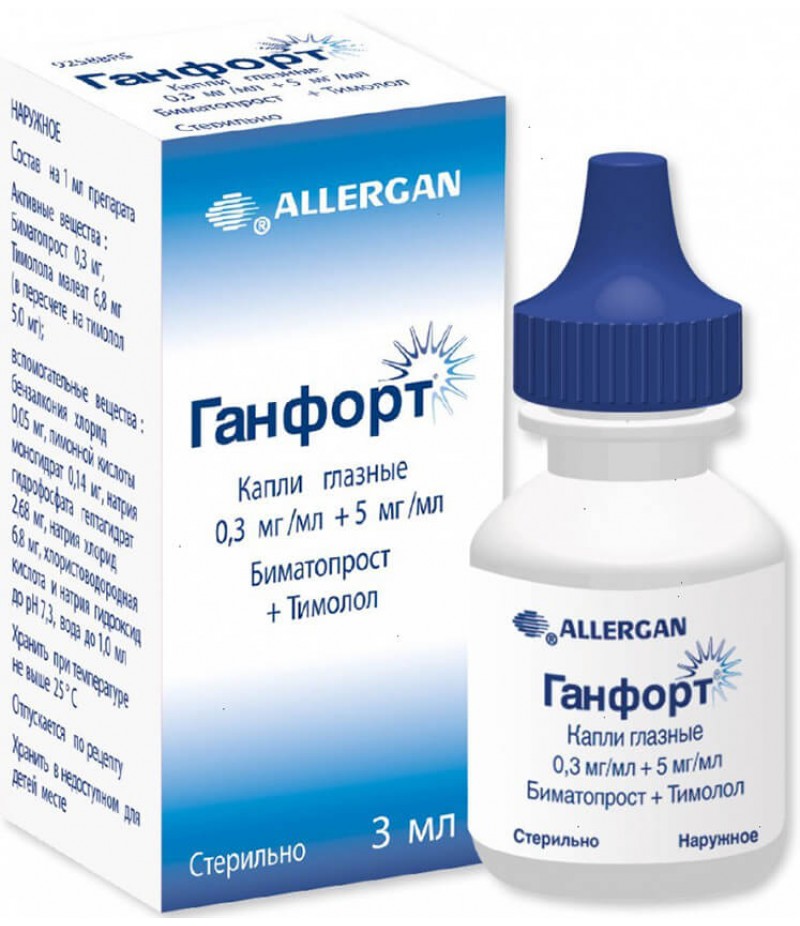Betoftan drops 0.5% 5ml
- $12.25
- 3 or more $11.99
- Availability:In Stock
Betoftan instructionReedm ore and buy Betoftan on this pageComposition Eye drops 0.5% in the form of a clear solution, colorless or light yellow with a brown tinge.In 1 ml of Betoftan:betaxolol (in the form of hy..
Tags: drops
Betoftan instruction
Reedm ore and buy Betoftan on this page
Composition
Eye drops 0.5% in the form of a clear solution, colorless or light yellow with a brown tinge.
In 1 ml of Betoftan:
betaxolol (in the form of hydrochloride) 5 mg
Excipients: sodium hydrophosphate dodecahydrate, sodium dihydrogen phosphate monohydrate, sodium chloride, disodium edetate dihydrate, benzalkonium chloride, purified water.
Packaging
5 ml - a bottle-droppers polymer (1) - packs cardboard.
pharmachologic effect
Antiglaucoma preparation. Betaxolol is a selective beta 1-blocker with no intrinsic sympathomimetic activity. Does not have a membrane-stabilizing (local anesthetic) action.
With topical application, betaxolol reduces both increased and normal intraocular pressure, due to a decrease in production of intraocular fluid. The onset of an antihypertensive effect is usually observed 30 minutes after the drug is used, and the maximum decrease in the ophthalmotonus occurs in about 2 hours. After a single instillation, the effect on the ophthalmotonus persists for 12 hours.
Betaxolol, in comparison with other beta-blockers, does not cause a decrease in blood flow in the optic nerve, miosis, spasm of accommodation, hemeralopia (in contrast to myotics).
Pharmacokinetics
Suction
Betaxolol is highly lipophilic, as a result of which it penetrates well through the cornea into the anterior chamber of the eye, Cmax in the anterior chamber is determined 20 min after instillation. With topical application, systemic absorption is low, the concentration in the plasma is below the threshold (2 ng / ml) of detection.
Distribution and deduction
Binding to plasma proteins - 50%. T1 / 2 - 14-22 hours. It is excreted by the kidneys (15% unchanged). The permeability through the BBB and the placental barrier is low, the secretion of breast milk is negligible.
Betoftan, indications for use
ocular hypertension;
chronic open-angle form of glaucoma;
Closed-angle glaucoma (in combination with miotics).
Contraindications
sinus bradycardia;
AV blockade II and III degree;
SSSU;
children and adolescents under 18 years of age (due to lack of data on effectiveness and safety);
hypersensitivity to the components of the drug.
With caution appoint a drug for diabetes, thyrotoxicosis, concurrent administration of oral beta-blockers, Raynaud's syndrome, pheochromocytoma, bronchial asthma, chronic obstructive bronchitis, AV-blockade of I degree, heart failure.
Application Betoftan in childhood
Contraindicated in children and adolescents under 18 years.
Dosing and Administration
Bury 1-2 drops in the conjunctival sac 2 times / day. In some patients, intraocular pressure stabilization occurs within a few weeks, therefore it is recommended to monitor intraocular pressure during the first month of treatment.
If the required level of intraocular pressure is not achieved with monotherapy with Betoftan, additional therapy should be prescribed.
Application in pregnancy and lactation
The use of the drug during pregnancy and lactation (breastfeeding) is possible only if the intended benefit to the mother exceeds the potential risk to the fetus or child.
Side effects of Betoftan
Local reactions: short-term discomfort in the eyes after instillation, lacrimation; in some cases - a decrease in the sensitivity of the cornea, redness of the eye, keratitis, photophobia, anisocoria, blurred vision, itching, dry eyes, allergic reactions.
Systemic side effects are rare.
From the side of the central nervous system: dizziness, nausea, drowsiness, insomnia, headache, depression, increased symptoms of myasthenia gravis.
From the cardiovascular system: bradycardia, cardiac conduction disorder and heart failure.
On the part of the respiratory system: dyspnea, bronchospasm, bronchial asthma, respiratory failure.
special instructions
Betoftan contains preservative benzalkonium chloride, which can be adsorbed by soft contact lenses and have a damaging effect on the eye tissue. Therefore, patients wearing soft contact lenses should take them off before applying drops and install, back no earlier than 20 minutes after instillation.
To prevent contamination of the pipette, do not touch the eye when instilled.
Beta-blockers should be used with caution in patients with a tendency to hypoglycemia, because these drugs can mask the symptoms of acute hypoglycemia.
Beta-blockers can mask some symptoms of hyperthyroidism (for example, tachycardia). Patients with suspected thyrotoxicosis should not abstain from beta-blockers, this can cause an increase in symptoms.
Beta-adrenoblockers can cause symptoms similar to those of myasthenia gravis (eg, diplopia, ptosis, general weakness).
Prior to the planned operation, beta-blockers should be gradually (not simultaneously) canceled 48 hours before the general anesthesia, tk. during general anesthesia, they can reduce the sensitivity of the myocardium to the sympathetic stimulation necessary for the work of the heart.
Care should be taken when assigning beta-blockers to patients with a greatly reduced function of the respiratory system. Despite the fact that clinical studies have shown no effect of betaxolol on the function of external respiration, one should not exclude the possibility of hypersensitivity to the drug.
Patients taking beta-blockers may have a history of atopy or anaphylactic reactions. In the case of repeated reactions, such patients may not be sensitive to the usual doses of epinephrine needed to stop anaphylaxis.
When instillation, the drug can enter the systemic circulation. Thus, the same side effects can be observed, as with IV, and parenteral administration of beta-blockers.
Betoftan has minimal effect on blood pressure and heart rate. However, care should be taken when prescribing it to patients with grade I AV blockade or heart failure. Treatment should be stopped when the first signs of decompensation of the cardiovascular system appear.
Impact on the ability to drive vehicles and manage mechanisms
Patients who temporarily lose visual clarity after instillation of the drug are not recommended to engage in activities that require increased attention and reaction before recovery.
Drug Interactions
With the simultaneous use of the preparation Betoftan and adrenaline solution for ophthalmic use in some cases, the development of mydriasis is possible.
With the use of the preparation Betoftan in combination with drugs depleting the reserves of catecholamines (such as reserpine), there may be an increase in such effects as a decrease in blood pressure and bradycardia.
With simultaneous use of the preparation Betoftan and beta-adrenoblockers for oral administration, the risk of side effects (both local and systemic) is increased due to the additive effect.
Caution should be exercised in the joint use of the preparation Betoftan and adrenergic psychotropic agents due to the possible strengthening of their action.
With the simultaneous appointment of muscle relaxants and hypoglycemic agents, there may be an increase in their effect.
When combined with sympathomimetics, there is an increase in their vasoconstrictive effect.
If necessary, it can be used in combination with other local ophthalmic preparations. In this case, the interval between their use should be at least 10 minutes.
Overdose
At present, cases of overdose of Betoftan were not reported.
If eye contact occurs in excess of the drug, wash your eyes with warm water.
Symptoms with an overdose of beta1-adrenoblockers: arterial hypotension, bradycardia, acute heart failure are possible.
Treatment: symptomatic.
Storage conditions
The drug should be stored in a dry, protected from light, out of reach of children at a temperature of no higher than 25 ° C.
Shelf life - 3 years.
After opening the bottle, the drops should be used within 4 weeks.
Terms of sell
You can buy Betoftan drops without a prescription.



